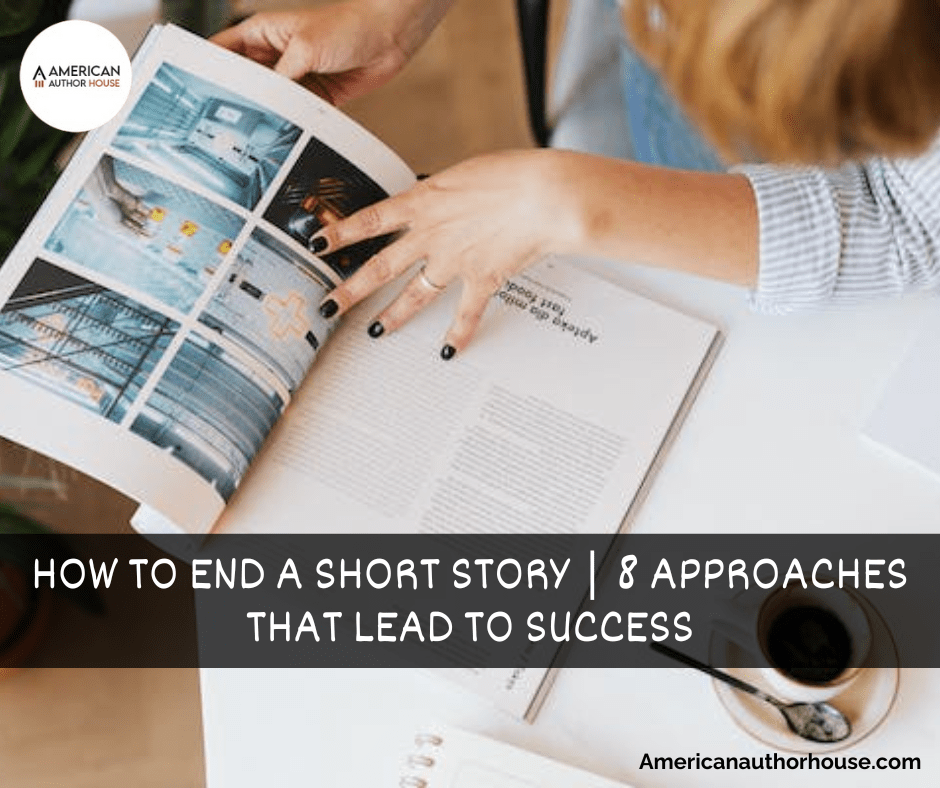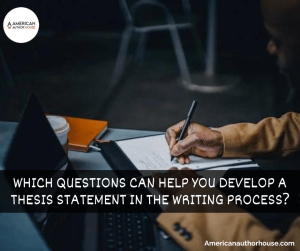
Writing
The ending of a short story holds the power to evoke emotions, leave readers pondering, and create a sense of closure. It is the final impression you leave on your audience, and it can make or break the overall impact of your story. By employing the right approach, you can ensure that your short story concludes on a high note.
The Importance of a Strong Ending
If you want to write memorable endings, they should be meaningful and impactful — in other words, they should convey something important about the story.
Many writers agree that there are two main endings: a twist or revelation and an emotional resolution for the characters. Both can be effective depending on what kind of story you’re telling — but whatever you choose, it needs to be believable and earned within the context of your story world. Also, a good ending has a positive effect on book advertising.
Approach 1: Circular Ending
The circular ending is a common strategy for fiction writers who want to end a story on a high note. The circular ending begins with the main character facing an obstacle or challenge, then shows them overcoming it. As the character achieves their goal, however, they are confronted by an even bigger obstacle—an unexpected change in circumstances that makes it seem like their victory will not happen after all, similar to the challenges faced in overcoming adversity.
But then the writer gives the character one last chance to succeed and overcome this new obstacle by returning to the beginning of the story (or near it) and repeating most of what has happened before. Such greats have used the circular ending. As William Faulkner famously said, “The past is never dead; it’s not even past.”
Approach 2: Surprise Twist
The surprise twist is a short story technique that can be used in several ways. One way is to make the reader think that the story will end a certain way, then suddenly switch gears and take it in another direction. The writer could use this technique to:
- Create an element of surprise by going against expectations.
- Change the direction of the story from where it was headed.
- Leave readers wondering what’s going to happen next.
Approach 3: Open-Ended Conclusion
This is one of the most common approaches to ending a story because it leaves the reader with something to think about. You can leave some questions unanswered, and you can also imply that there is more to the story than what is written. For example, if your story ends with the main character in a bad situation, you might write something like this:
“I don’t know what happened next.”
The reader will want to know what happened next and may even imagine the story’s ending.
Approach 4: Resolved Conflict
The fourth approach to ending a short story is to resolve the conflict. In other words, if the main character has been trying to solve a problem or prevent something from happening, the story can end when she finally succeeds.
Take the example of “The Necklace,” which ends with Madame Loisel becoming rich after finding a diamond necklace falling from her neck on New Year’s Eve. This resolves her conflict because she’s no longer poor, and her husband can buy expensive jewelry.
Approach 5: Moral or Lesson
The moral of a story is what the author wants readers to learn from it. The moral can be explicitly stated in the body of the story, or the events themselves can imply it. In some cases, it’s both.
For example, let’s say you’re writing about a woman who has an affair with her boss and gets fired. You could choose to end your story with her being fired and then realizing that she would have been better off staying faithful to her husband — but you could also decide to leave things open-ended by ending with her getting fired and then deciding whether or not she will go back to her husband. This second approach allows readers to decide how they feel about what happened in the story — while still communicating what they think they should take away from their ending.
Approach 6: Symbolic Closure
When writing a short story, it can be tempting to end with the climax and leave it at that. However, if you want to write a story that resonates with your readers, you need a sense of closure.
The best way to do this is by adding symbolism. Symbolism is a powerful tool for creating meaning and conveying emotion. It can be used in almost any fiction genre, but it works particularly well in short stories because they rely on a few words to convey their message.
Here are some examples of how symbolism can help close out your story:
- A symbol that represents the protagonist’s inner struggle or conflict (e.g., The protagonist may have an inner battle between good and evil).
- A symbol that represents how the protagonist has changed throughout the story (e.g., A butterfly might represent the character’s transformation from an insecure teenager into someone who feels confident enough to move away from home).
Approach 7: Foreshadowing
Foreshadowing is a literary device that gives hints about what’s to come. It can build suspense, create tension, and make the reader curious about what will happen next. For example:
“A strange presence haunted the house.”
This line hints that something supernatural may happen later on in the story. Foreshadowing is often used at the beginning of a story to set up what will happen later.
Approach 8: Ambiguous Ending
This is another popular approach to ending a story. It’s simple, direct and effective if done right. Here’s how you do it:
End your story with a question or an open-ended statement. It’s a great way to leave your readers guessing what happens next.
Here are some examples:
- “They say he never came back.”
- “Did she ever get her revenge?”
- “Why did he do it?”
Other approaches
The feel-good ending
If you want to end your story on an uplifting note, this is the best way. You can be subtle or extreme, but you should ensure that whatever happens in your story makes the reader feel good about it. You can visit American Author House to read more content on ending approaches.
The realistic ending
A realistic ending is not too over-the-top or unrealistic. It should be something that could happen in real life, even if it doesn’t happen very often. This type of ending is great for stories meant to be taken seriously and teach a lesson or two.
Are there any specific approaches that work best for certain genres of short stories?
Each approach can be effective in various genres. However, circular and resolved conflict endings are commonly used in traditional genres, while surprise twists and open-ended conclusions are more prevalent in contemporary or speculative fiction.
How do I know which approach to choose for my short story?
Consider the themes, tone, and overall message of your story. Pause for a moment and think about the impact you want to make and the emotions you want to evoke in your readers when you do a book launch. Choose an approach that aligns with your intentions and enhances the overall narrative.
Key Approach / Characteristics and Profound Details
| Approach | Description | Examples |
|---|---|---|
| Circular Ending | Begins and ends at a similar point, showing the character’s journey and an unexpected challenge at the end. | Character overcomes an initial obstacle but faces a new, bigger one at the end. |
| Surprise Twist | The story ends in a completely different way than what is expected, creating a surprise for the reader. | The narrative direction changes, leaving the reader guessing. |
| Open-Ended Conclusion | Leaves some questions unanswered, implying more to the story than what is written. | The story ends with an ambiguous situation, encouraging the reader to imagine. |
| Resolved Conflict | The main conflict or problem in the story is resolved, providing closure. | The main character solves the central problem or achieves their goal. |
| Moral or Lesson | Conveys a moral or lesson, either explicitly or through the events of the story. | Story ends with a clear message or learning point. |
| Symbolic Closure | Uses symbolism to represent the protagonist’s change or the story’s message. | Incorporates symbols reflecting the character’s inner journey or transformation. |
| Foreshadowing | Hints at future events in the story, creating suspense and curiosity. | Early elements in the story hint at future developments. |
| Ambiguous Ending | Ends with a question or open-ended statement, leaving the conclusion up to the reader. | The story concludes with an unresolved situation or question. |
Conclusion
Crafting a compelling ending for your short story is essential to leave a lasting impact on your readers. By employing one of these eight approaches, you can create an ending that resonates, surprises, or challenges your audience. Experiment with different techniques and find the approach best suits your story’s themes, characters, and narrative style.



